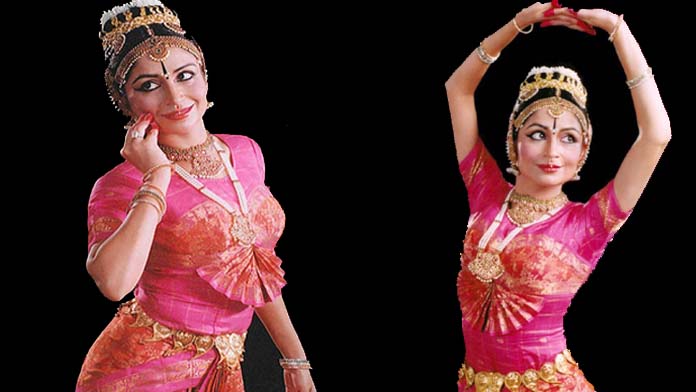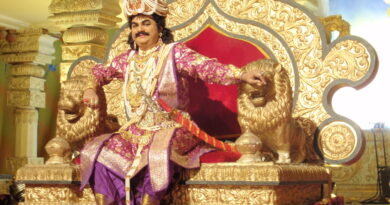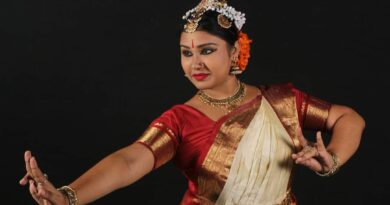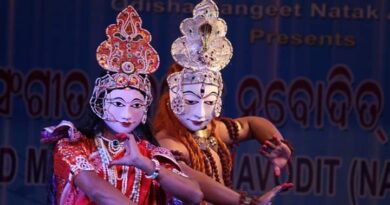A Multi-talented and Empowered Danseuse
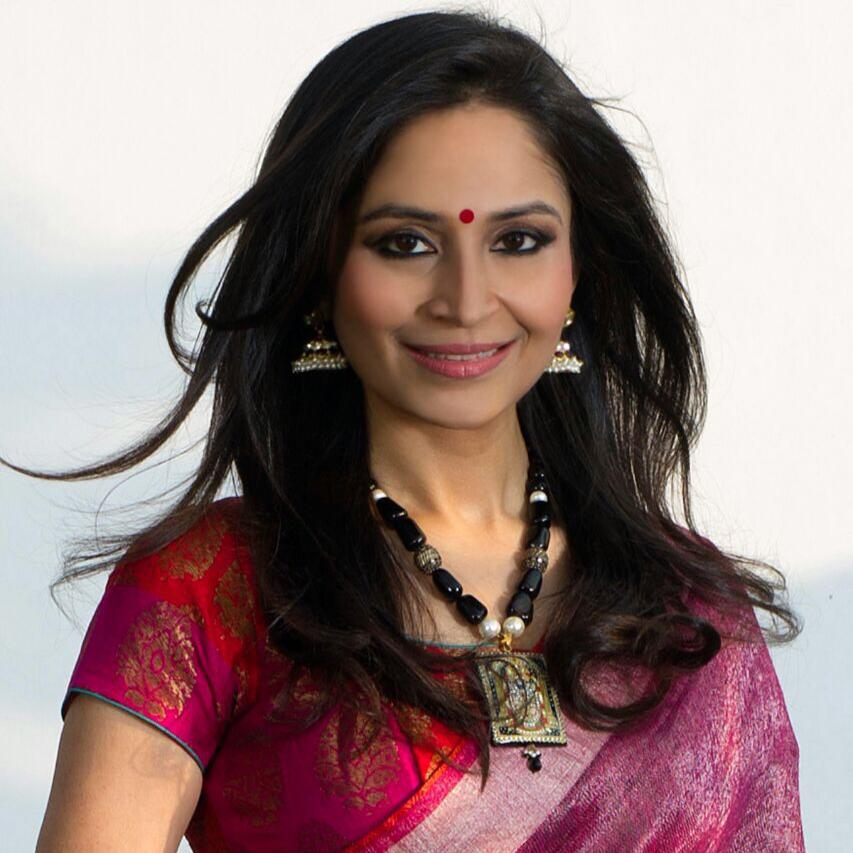
Text: Paul Nicodemus
She takes responsibility, values her passions, takes a stand and empowers other women. A danseuse and social contributor in her own right, she stands as an epitome of women’s empowerment. Shallu Jindal, a multi-talented and charming personality has donned several hats to a great effect. She appreciates art, promotes culture and has worked towards becoming one of the leading exponents of Kuchipudi. She is married to Naveen Jindal, a leading steel baron, Forbes celebrity and a young Member of Parliament. Her dedication and involvement in promoting and encouraging learning of Indian Art forms amidst masses are praiseworthy. She has been promoting the legacy of the National Flag amongst the masses, as an abiding symbol of the country’s sovereignty, spirit and strength.
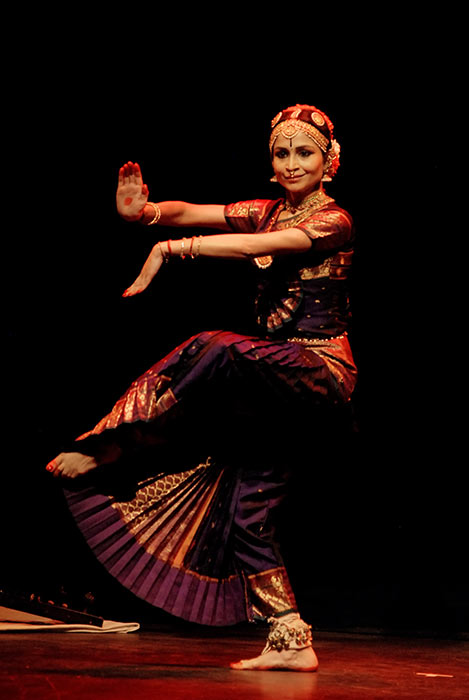
Shallu Jindal is born in Ludhiana, Punjab in a respected and elite family. She had a typical small-town childhood. Her mother was keen on her learning classical art, so she learnt Kathak. “I took Kathak classes as a young child from a local Kathak guru and won many prizes in Kathak at school and college level State Youth Festivals,” she says. She was awarded the College Colour and Roll of Honour in Classical Dance. After graduation, her family moved from Ludhiana to Mumbai. She studied business management and fashion design for a year in Mumbai and then went to London to pursue a two-year course in interior design. She did her Bachelor of Arts in Economics and Diploma in Interior Designing. After returning from London she got married and dance became a distant dream until she met her Gurus Raja, Radha and Kaushalya Reddy.
Shallu was destined to learn Kuchipudi. She has always been inspired by dance since her early days, but her initiation into the tradition of Kuchipudi by gurus Raja, Radha and Kaushalya Reddy happened through a chance meeting with them at the lotus feet of Lord Venkateswara in Tirupati. It led her to study, practice and perform the dance form. “I call it a divine intervention that helped me find my path. When I was thirty-three years of age, I had gone to Tirupati Balaji for darshan where I first met Gurus Raja and Radha Reddy who then invited me to learn Kuchipudi dance from them. It was a divine coincidence,” she reveals. By then, her children were young, and she had no idea about how it would change her life. Even though she had a background in classical dance, Kuchipudi was an unknown territory.
Today, she performs Kuchipudi both in India and abroad and always says it was meant to be. “Lord Venkateswara showed me a divine light in my gurus to pursue my love for dance,” she reiterated. Her love for dance has taken her to several exotic places across the country and abroad, from Chandigarh to Kerala, to London. She has dedicated herself to the cause of promoting Kuchipudi not just in India but also internationally.
She believes that God has entrusted and blessed her to learn Kuchipudi during this lifetime. “In my journey, my immediate family – my husband, children have always encouraged me to pursue my love for the dance. My gurus Raja, Radha and Kaushalya Reddy played a major role in inspiring and motivating me to learn Kuchipudi,” she adds.
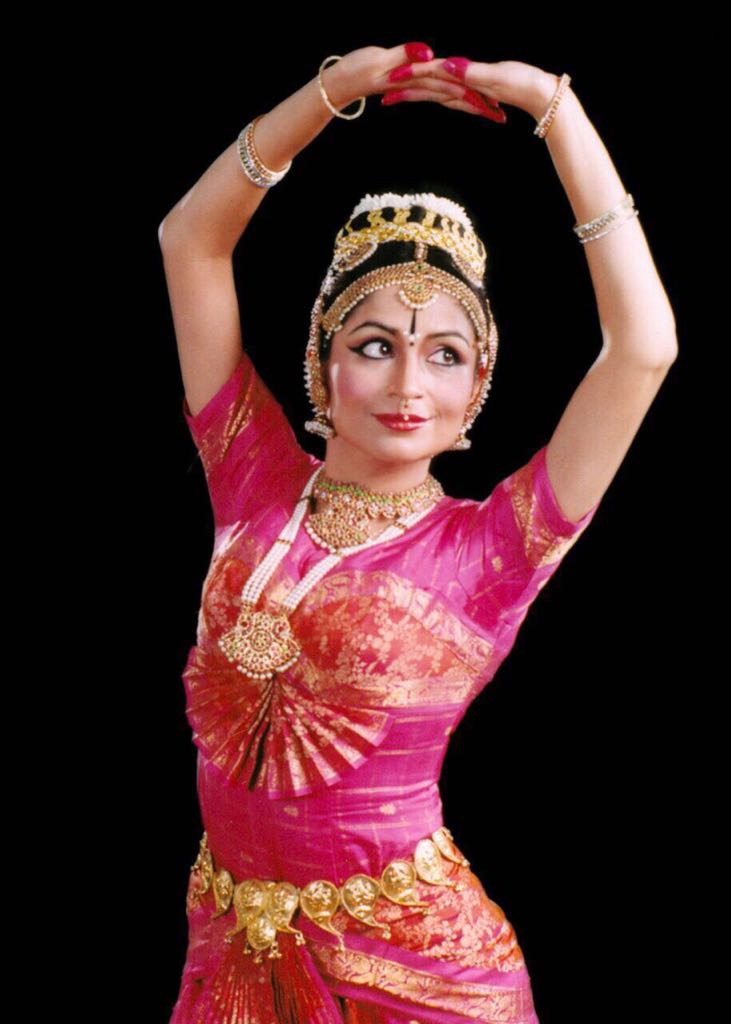
According to her, as an ancient art form, Kuchipudi has great significance. It is one of the major classical dance styles of India which originated from the Yakshagana and Veedhi Bhagavatam: the street plays and Temple dance forms of Andhra Pradesh in India. Yakshagana and Veedhi Bhagavatam artistes were a group of nomadic performers who would travel from village to village, presenting dance dramas to entertain and to educate people. These groups through entertainment laid a systematic and constructive approach. It was not until the 14th Century that the legendary Siddhendra Yogi systemized and developed the art form of Kuchipudi. “Kuchipudi is a scintillating dance form and I believe it should be celebrated and cherished as an integral part in the cultural fabric of India,” she says. Kuchipudi enjoys a unique place among Indian classical dance forms. It is both conventional and realistic, which is why it is appreciated by audiences worldwide. “It is a cosmic dance form which has a beautiful amalgamation of Tandava and Lasya. I really want the new generation to connect with the beauty of this art and to help them do that, I have opened the Jindal Art Institute in Delhi which along with Kuchipudi will promote learning of varied art forms and will soon launch the same in Odisha,” she reveals.
The conception of Jindal Art Institute – JAI happened from her desire to promote and protect Kuchipudi as an art form and inspire people to pursue it. “I started performing Kuchipudi 14 years ago and today, my identity as a Kuchipudi dancer is most precious to me,” she says. Now, she is passionate not just about promoting Kuchipudi but all dying art forms of India.
She is passionate about the promotion of Indian art and culture, and her academy JAI – Jindal Art Institute in Delhi which encourages learning of varied performing arts is a step towards the same. It is founded with the aim of spreading far and wide the rich artistic heritage of India and the world with the masses with the belief that art brings peace.
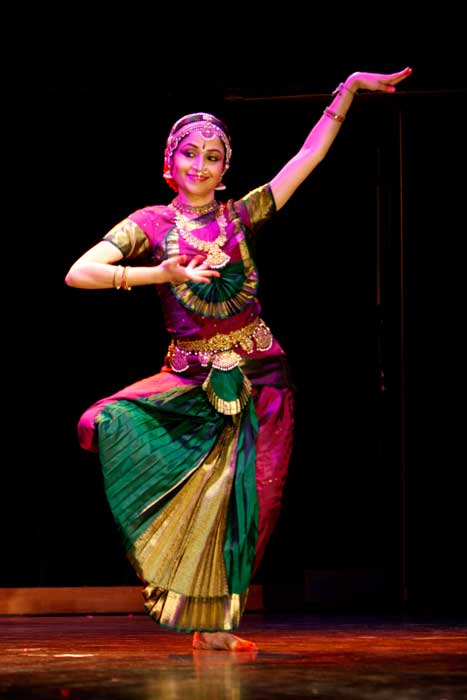
Dance makes her meditative and helps her to connect with herself. Through dance, she aspires to connect with God. It has made her more spiritual and helped her realise that God is within her. “I draw my inspiration to dance from God by trying to do my best and lift people’s spirit through the storytelling of dance. In my performances, I get transported to a zone of mind consciousness where everything goes still; the only thing that exists is the spirit of dance reaching out to the divine,” she says.The decision to pursue a new dance form at the age of 33 was the most challenging moment of her life. Learning anything new takes time and has its challenges especially when years have passed by, but she made up for all the lost time by putting in the double effort and hard work. To achieve excellence in Kuchipudi and pursue her passion for the dance, she had to sacrifice a lot. “Dance completes me and I am so glad I pursued my passion. Many people give up on their dreams thinking they have lost out on time, but now looking at my story people come up and say they are inspired by me and it makes me feel these challenging moments have also been the most memorable and enriching ones,” she says.
The best and happiest moment of her life was when God gifted her two wonderful blessings – children. As a parent and artiste, she was overwhelmed with joy when her daughter decided to pursue Kuchipudi. She even performed her Rangapravesam. “Many people including my parents saw her perform and said they felt it was a younger version of me on stage. I felt extremely proud that she is taking on the legacy of Kuchipudi ahead and my passion for dance and arts will live through her,” she says.
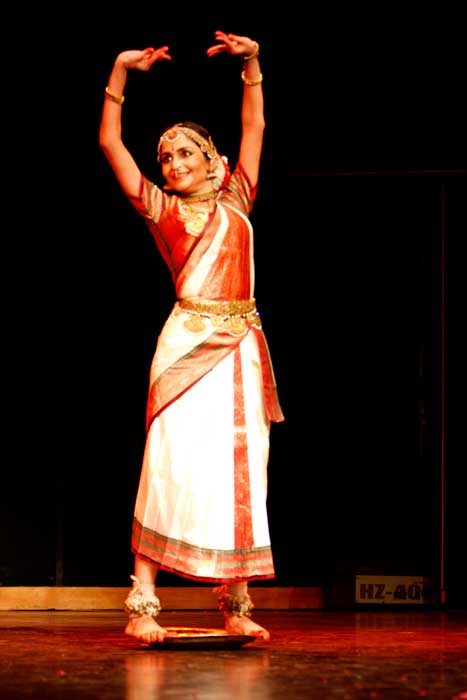
Today many classical dancers are mixing the traditional Indian dance forms with different dance and music forms to come up with renditions that are not only visually spectacular but also adding to the dance’s popularity. “Dance as I see it is like a river, old water flows and merges with the ocean while the new water comes in from the glaciers. It is good to evolve and move with time. Choreographing items of Kuchipudi in different languages like Hindi, English and Urdu is important to get appreciation but following the rules and principles of the Natya Shastra is important. Dance scriptures like the Natya Veda and Natya Shastra have given certain principles and rules for footwork pattern, hand (hasta) gestures and face (Mukha abhinaya) expressions which must be followed. Kuchipudi is a combination of Tandava (masculine) and Lasya (feminine) and forms its graceful movements and expressions which the audience can easily relate to. To put it concisely I think that changing or incorporating different ‘abhinayas’ and movements, music/songs of the language spoken in a particular region can be experimented with, depending upon where one is performing. But the original form of Kuchipudi should never be experimented with, one has to retain the purity of the dance while adding new elements to it,” she explains.
Time is the precious and limited but Shallu has perfected the art of time management. Like any other modern Indian woman, she faces the constant challenge of dividing her time between her children, home, husband and social engagements, welfare and foundation work and her own passion for the dance. “I am blessed and grateful that my husband and children have always been very supportive in all my endeavours. They understand and respect my need for creative space as a performing artist,” she says. Their understanding motivates her to grow as an artiste. “As a family, we go on holidays together and that turns out to be our bonding time. When my children were younger, I gave them a lot of time but now as they have grown up, we share quality time. As a family, we believe in spending quality rather than quantity of time together. I sincerely believe in multitasking and have been doing time management all my life,” she adds.
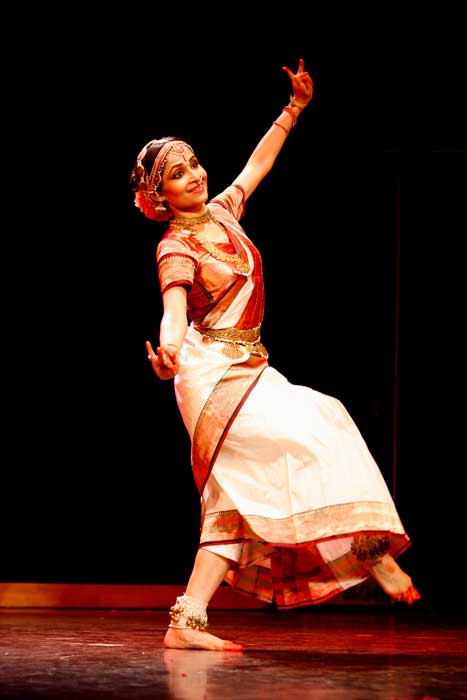
A typical day in her life starts with Yoga at 6 am after which she does Puja and then with family. Every day she dedicates 2 hours for dance practice. After lunch, she attends meetings and devotes time to the work and affairs related to JSPL Foundation, Jindal Art Institute, National Bal Bhavan and other projects in CSR. She has also been working for the upcoming Leadership Academy for Underprivileged Girls. She ends her day with a walk in the Lodhi Garden, Delhi with friends. Before going to sleep, she retrospects, through the day’s events in gratitude for all the positive learnings and blessings. She loves to read and usually does reading before bed. “I am reading ‘RUMI’, the famous Persian Poet whose work has been translated in many languages around the world,” she says.
Shallu believes art forms can help bring peace and brotherhood among masses and people. They can be instrumental in helping people achieve and unleash their hidden potential. “Dance is a wonderful and powerful instrument to transmit messages to masses; people remember the story shared through music and dance. It brings great joy to people and brings people together. Dance especially classical dance has the depth to it. It involves your mind, body and soul. It is a medium by which both the dancer and the audience are lifted together in a spiritual experience,” she says.
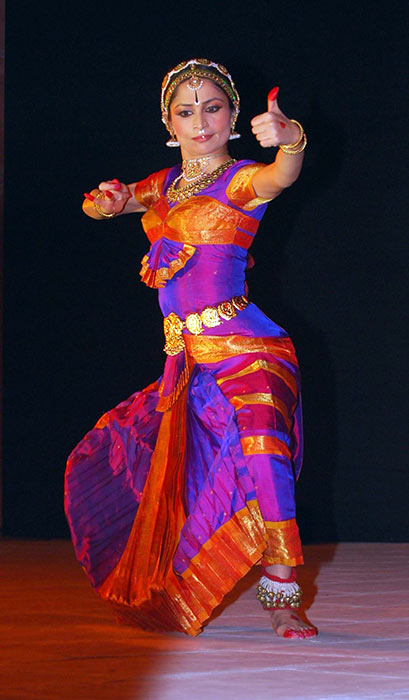
Being the Co-Chairperson of JSPL Foundation she is involved in all the work done through JSPL Foundation which focuses on enhancing the quality of life of the community. “Through varied projects I get to work passionately to give back to society doing my bit in improving community healthcare, education, and also in developing critical small civic infrastructures besides generating sustainable livelihood options, vocational skill training, promoting sports, art and culture. Women Empowerment Projects are also close to my heart and I am working towards a Leadership Academy focused on underprivileged girls – which will strive to raise future leaders who can navigate a variety of social and cultural contexts, and who will remain committed to the development of India,” says Shallu. She loves reading and sharing her passions with the young and old of India through books. Shallu has compiled books like Tiranga, My Life, My Words and Freedom with a great passion for the nation. She has authored her first book for children titled ‘India: An Alphabet Ride’. “It is a wonderful way of introducing your children to India as everyone should know it,” she says. She also loves collecting contemporary art.
Even in the days to come, her desire is to continue to be involved in promoting and encouraging learning of Indian Art forms amidst masses through the Jindal Art Institute (JAI). Her dream is to open branches of JAI in different cities of India and abroad. She wants it to be a Centre for learning performing arts – like a one-stop destination for all sections of society. “In the future, we will also offer scholarships to children performing well in certain art forms to encourage equal opportunities to all,” she says. Nurturing and mentoring women leaders who would have come up in her Leadership Academy from the underprivileged sections, who did not get equal opportunities in life despite their talents and skills is one of her desires. “Such that they contribute to making a better India for all,” she adds.
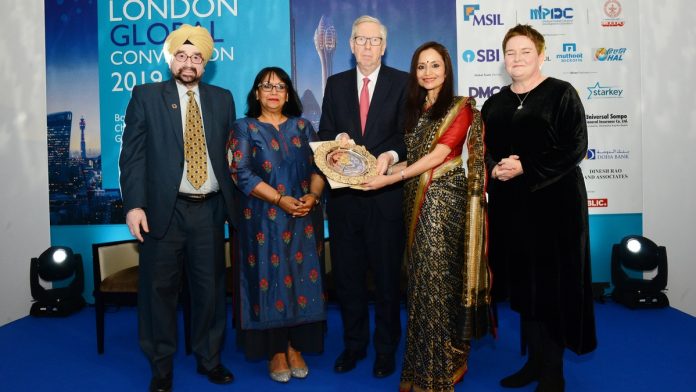
Golden Peacock Award to Ms. Shallu Jindal 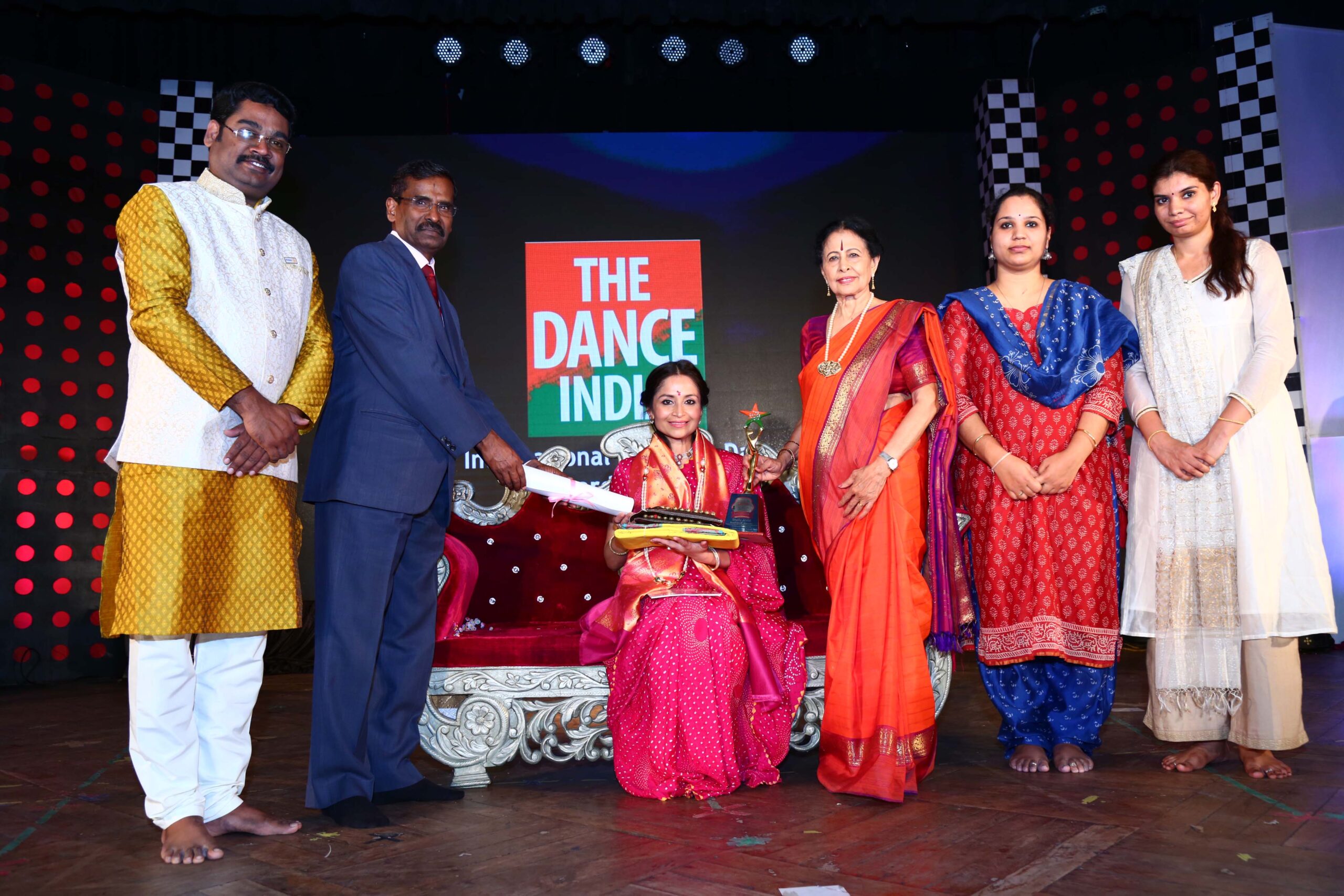
The Dance India Magazine presenting Beacons of Light award to Kuchipudi dancer Shallu Jindal on International Women’s Day 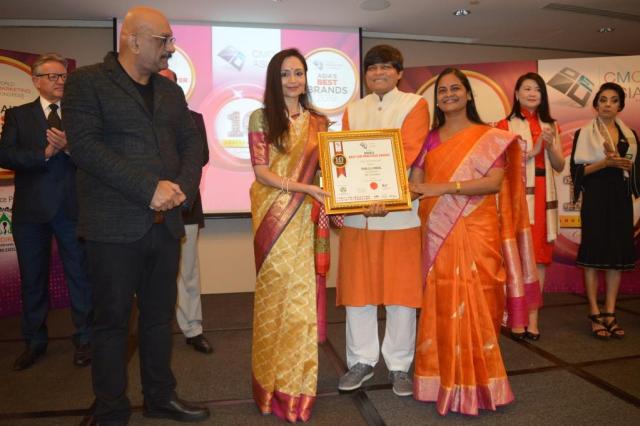
Shallu Jindal has been honoured with Best CSR Practices Award 2019 in Social Entrepreneurship 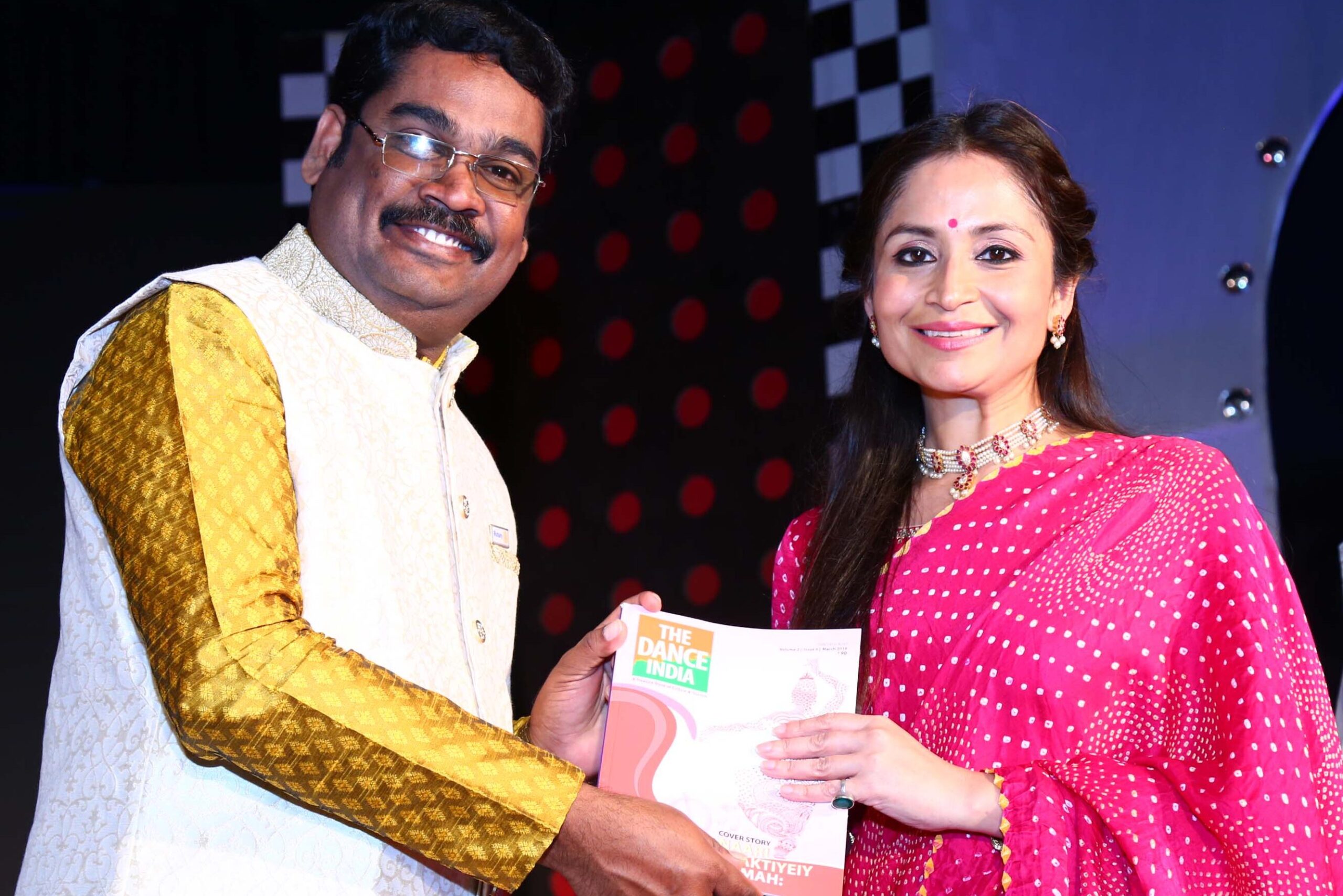
Shallu Jindal Receiving The Dance India Magazine From The Editor In Chief BR Vikram Kumar
Over the years she has been blessed and honoured by various organisations for her contributions towards social activities through the field of art and culture, education and community development. Some of them include ‘Beacons of Light Award’ for Dance in March 2018 from The Dance India on International Women’s Day by Trivikram Publications, Visakhapatnam; ‘Tathastu Award’ for her outstanding contribution in art and culture 2017; ‘Kalashree Samman’ for Dance in May 2015 from Gandharva Kala Parishad , Bhubaneswar; ‘35 Women Empowerment Award’ in the category of Dance from Bharat Nirman, an NGO promoting Indian values; ‘Women Role Model Award – 2014’ in the category of Dance (Indian Classical Dance); ‘Art Karat Award for Excellence’ by Art Karat for remarkable contribution in Indian Classical Dance – Kuchipudi. ‘Naatyasree’ title at by Nataraj Music & Dance Academy – a member of International Dance Council, UNESCO; Rajiv Gandhi Excellence Award for Best Classical Danseuse; International Women’s Day award under the category of ‘Dance’ (IWD award) by ICUNR (Indian Council for UN Relations). ‘Indira Gandhi Priyadarshini Award’ for achievements in Indian Classical Dance ‘Kuchipudi’ and her contributions in art, culture, education and community development in 2007 and Shaheed-E-Azam Bhagat Singh State Youth Award in 1987.
Her message to the upcoming generation of artistes:
Follow your dreams, work hard and never give up because if you work hard and are passionate about your goal, you will certainly achieve it. Where there is a will, there is a way. Life is a journey, not a destination, there will be obstacles along the way but you must persist with determination because it is during the journey that true self-discovery happens.
“Whatever you do on Earth, your time should be meaningful,” she concludes.
****

“As my better half, an artist and above all as an inspiring human, Shallu brings encouragement to my days with her inspirational endeavours in art, culture and community. When she decided to start dancing again after marriage, she had to face many challenges. She gave up the dance for her children but she surmounted all challenges with great persistence and hard work to begin dancing again. The first time I saw her dance I was happy that she could pursue her passion so beautifully and inspire people. When she dances she transcends and takes her audience along into a spiritual experience. WE ARE SO PROUD OF HER. As a mother, a wife and a leader, she empowers people including me to become the best you can be in any form. Dance communicates like no other art form and through dance, she communicates her love for God in the most special way possible. She is extremely hard-working, and it amazes me how she continues to challenge herself and surpass her goals every day. Watching my daughter follow in her footsteps is awe-inspiring. Shallu has introduced me to the beauty of artistic heritage of this nation like no one could. I have always been a proud Indian but through Shallu, I have learned even more of the artistic heritage of this country and wish to support her in the endeavours to promote the same.”
Naveen Jindal, a leading steel baron, Forbes celebrity, a young Member of Parliament and husband of Shallu Jindal
****

